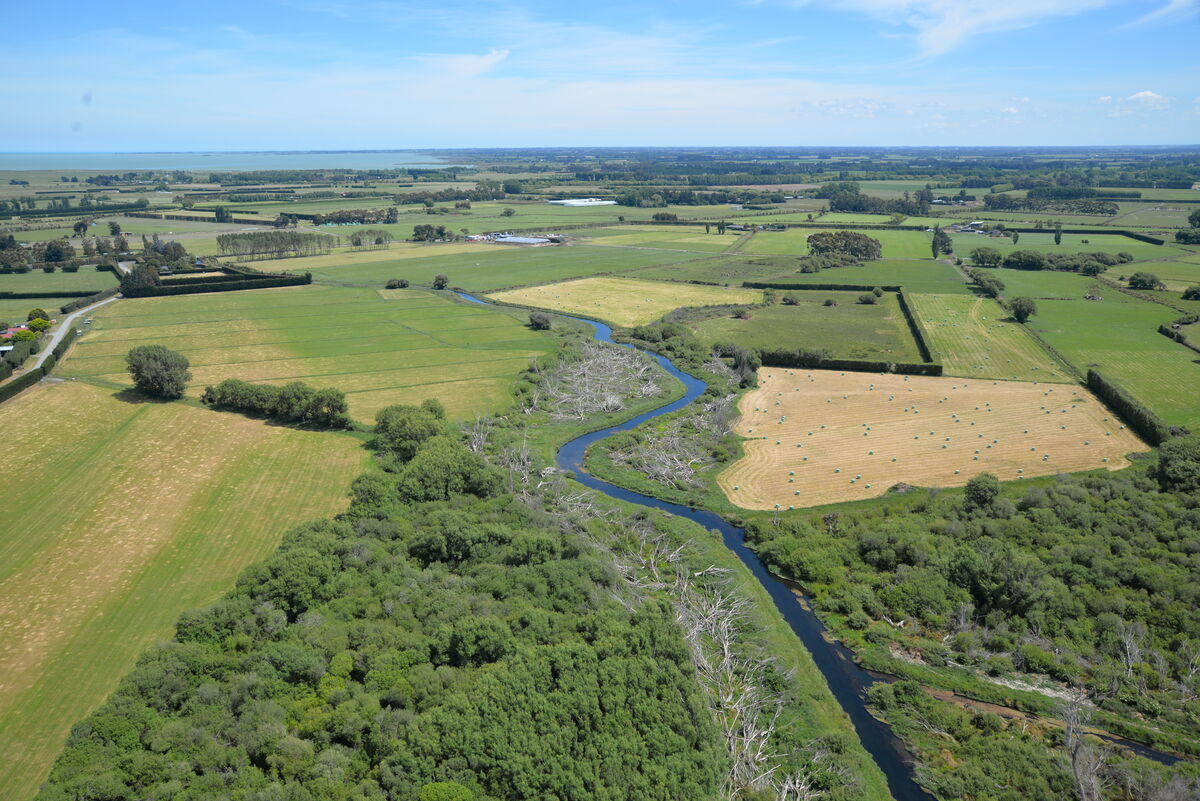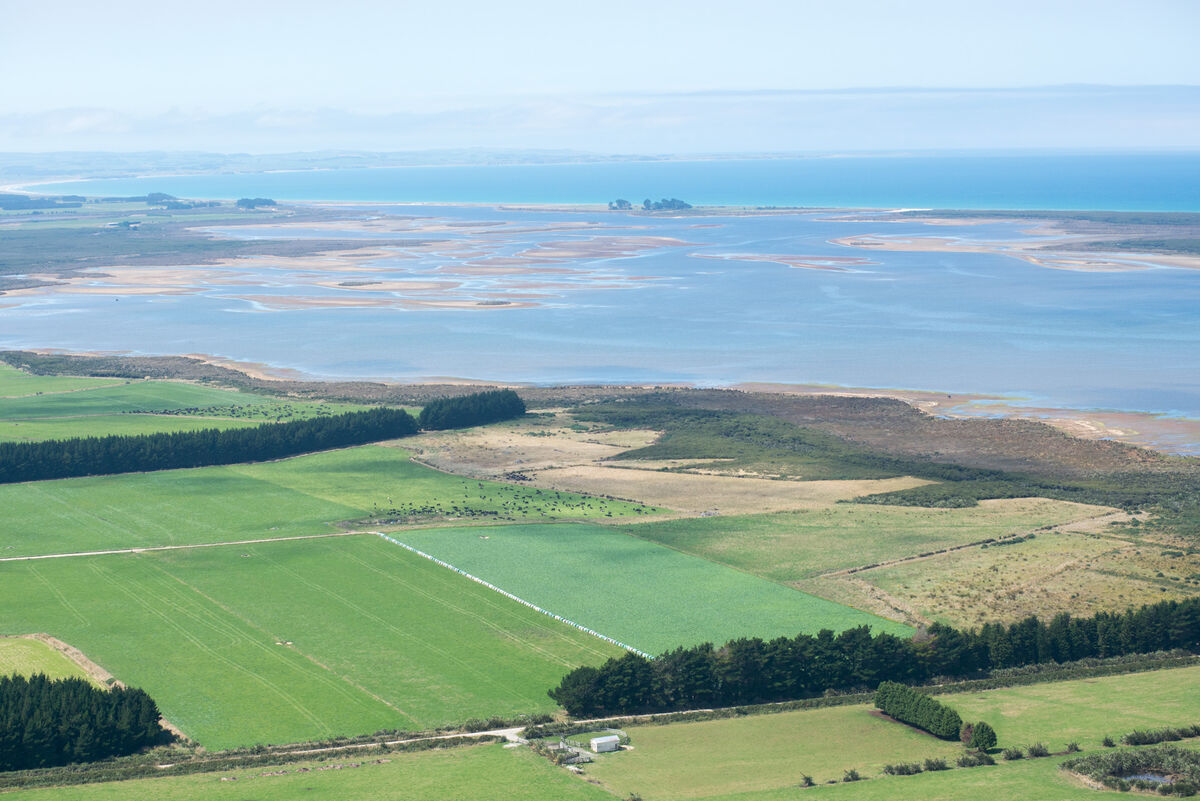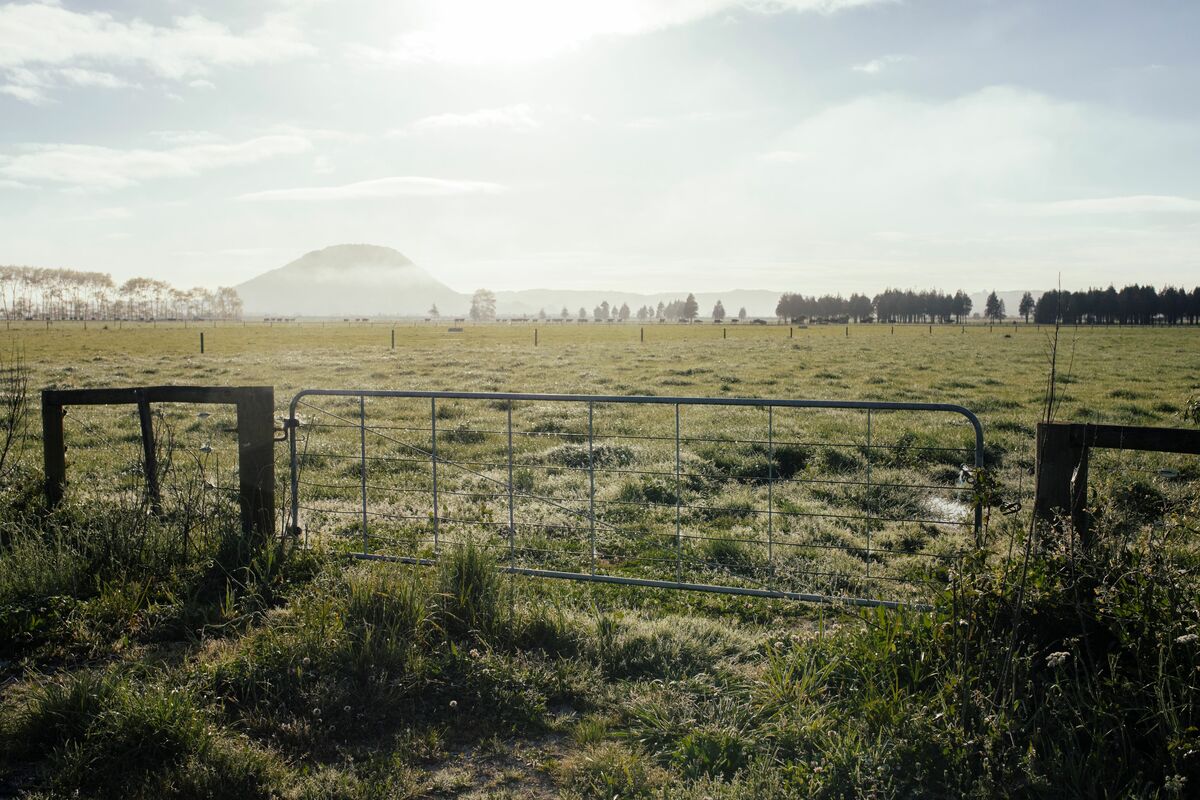
Improving freshwater ecosystems in agricultural landscapes
Farming is central to Aotearoa New Zealand’s economy, equally, freshwater is one our most precious resources and is essential to life on earth. We expect to be able to swim, play and gather kai from our lakes, rivers and streams. Vegetation clearance, land drainage and high levels of contaminants have reduced the size and degraded the quality our freshwater ecosystems.
From 2013-2024, Living Water, a partnership between the Department of Conservation and Fonterra, trialled methods to improve freshwater in five farming catchments.
Living Water’s efforts were focused in the lowland areas which are predominantly dairying, made possible by the historic removal of vegetation and drainage of the landscape.
A key takeaway from the 10-year programme is there is no quick fix to improve freshwater ecosystems in farming catchments. “We knew from the outset that ten-years is a short timeframe to make significant ecological improvements” says Living Water National Manager, Sarah Yarrow. “The landscape is naturally changing, then human interactions with land has modified things further over the last 150 years. We need to act collectively, moving beyond laying blame so that we can focus on long-term outcomes for our awa and te taiao”
Where do you even begin in tackling such a big issue?

Sarah Yarrow

Katie Collins
Understanding the natural landscape characteristics
Dr Katie Collins, Freshwater Science Advisor at the Department of Conservation explains “naturally there is spatial variation in water quality, from a rivers source in the mountains or bubbling up from underground springs to when it reaches the bottom of the catchment. Even in the most pristine and untouched catchment, water quality varies from source to sea.”
To use Living Water examples, the Waikato Peat Lakes have naturally heavily stained water from the tannins in the peat swamps compared to the clear water of the Canterbury Plains which bubble up from underground springs around Te Waihora/Lake Ellesmere. Each catchment has its own unique characteristics of landscape, soil type and water source and its own unique challenges, said Dr Collins.
Water travels above (surface water) and below (groundwater) the ground and is influenced by a multitude of factors. Dr Collins explains, “The flow of both will vary due to rainfall, irrigation, land cover (forest, pasture etc), soil types (permeability, texture, nutrient status) and the steepness of the catchment.”
As water makes its journey through the catchment, it naturally collects contaminants, which accumulate in lowland waterbodies like lakes, rivers, estuaries, and oceans. Vital ecosystems like wetlands, riparian zones and floodplains are intricately connected through groundwater and surface water, these habitats rely on interaction between the two for connectivity and to support a diverse range of flora and fauna. With climate change bringing fluctuations in seasons and rainfalls, this adds a further layer of complexity.
Aotearoa New Zealand has an incredibly diverse landscape which is why water quality and composition varies so widely between regions and catchments, even when there are similar land uses and pressures on surrounding land. “There is natural variation from farm to farm, even from paddock to paddock, with natural landscape features often playing more of a part in determining water quality outcomes than how the land is used. (Rissmann, C.W.F., Pearson, L.K. & Snelder, T.H. Physiographic Environment Classification: a Controlling Factor Classification of Landscape Susceptibility to Waterborne Contaminant Loss. Environmental Management (2024)) We need to tailor the solutions to the landscape across the motu” says Dr Collins.
The natural function of water systems has been changed
“If we go back over 100 years, the landscape of these catchments would have looked quite different” says Dr Collins. Vegetation has been cleared on a large scale, rivers and streams channelised, wetlands drained and growth in urban areas . All this has resulted in straightened waterways – or drains, often with no planting on banks. We’ve engineered infrastructure like pumps, dams and weirs for controlling flows, but they can also impact fish migration which is essential for many of our native species to complete their lifecycles.
“This has modified the functioning of the natural water network and these drains are often the last remaining refuge for freshwater species in the landscape.”
Artificial drains still drain into the sea – sometimes through an estuary like Waituna Lagoon or Te Waihora/Lake Ellesmere – and that’s where all the small problems throughout the catchment, converge and accumulate. “It’s like death by a thousand cuts.” Says Dr Collins.
"Even though efforts have been made to improve farm practices and increase on-farm biodiversity, the scale of the challenges extend beyond the boundaries of farms, requiring much larger approaches to addressing them," says Dr Collins. Extensive drainage schemes and flow diversions have fundamentally altered the ecological functioning of lowland areas, while the conversion of land for agricultural development has resulted in the large-scale loss of wetlands and stream habitats. The natural function of wetland and riparian areas slow the flow of water, allowing contaminants to settle before making its way into the waterways.

Unlocking the power of collaboration
Water flows through both public and private land so it makes sense to work together on freshwater improvements. “Nature knows no boundaries” says Sarah Yarrow, Living Water National Manager “and we know that improvements require multiple actions at multiple locations, there is no one single organisation or entity that could undertake this challenge.”
A lot of different groups are working to improve freshwater. Often, they’re not working together, or their work is disjointed. Groups include government organisations, iwi, hapū, local and regional councils, community groups and landowners, which vary from catchment to catchment.
Bringing these groups and organisations together for freshwater improvement comes with a unique set of challenges but also provides multiple benefits. Collaboration facilitates the sharing of knowledge, resources and expertise which can lead to more effective and sustainable practices in catchments. It opens the door for the development of technologies and approaches that can improve freshwater management and farming practices. “We put a lot of focus on ‘technical’ tools” says Yarrow, “there needs to be equal investment in social processes to enable groups to successfully work together.” Living Water learnt this through being part of various multi-agency and local partnerships. When working with stakeholders with differing backgrounds, views and aspirations there needs to be support to navigate the collaborative process.
What is fundamental to this is having people involved in the programme who can guide the social interactions that bring people together, and keep them working together. In several of our projects we had what we termed a ‘social coach’ – someone who sat beside the group and guided the interactions and kept bringing people back to the core questions to be answered to make good decisions and keep momentum going”.
Says Yarrow. “When groups come together and realise shared values, it builds a sense of connection, momentum, and empowerment. This environment fosters innovation and action which ensures these long-term and often intergenerational projects continue when external factors do change, like agency staff. ”Traditional knowledge, cultural practices, and local community insights are central to collaborating for better catchment outcomes. By embracing the multiple knowledge systems available to us, we can develop management strategies that are not only scientifically robust but also culturally appropriate and socially inclusive, leading to more sustainable and equitable water management practices.
Mana whenua and local communities have long-standing relationships with their environments, rooted in centuries of observation and adaptation. Their knowledge, passed down through generations, holds wisdom about catchment processes, water systems, and historical land use practices that may not be fully captured by scientific research. “By integrating mana whenua and local knowledge into catchment management strategies, we not only gain a deeper understanding of water management challenges and opportunities but also foster a sense of ownership and participation within the community.” Says Yarrow.
Holistic approaches and collaborative action
Improving freshwater ecosystems in farming environments is a complex challenge that requires multi-pronged approaches to improvement. We need to understand our diverse natural landscape and how it influences water as it moves through the catchment. We need to understand how the modifications we’ve made to the land to live a modern lifestyle have affected the natural functioning of our wetlands and waterways. We need to proactively protect what remains and bring nature back to these landscapes to allow them to perform their natural functions like filtration and water retention. Science provides data on options and actions, but it’s up to people to implement the changes. Collaborative freshwater mahi should be framed using social science, not purely as environmental management projects.
“We are intrinsically connected to our environment, degraded freshwater quality affects us all but cohesive catchment plans involving government organisations, mana whenua, agencies, landowners and community organisations will share the load and be mana enhancing for all involved” says Yarrow.
Next story --> Gathering data for a catchment approach
